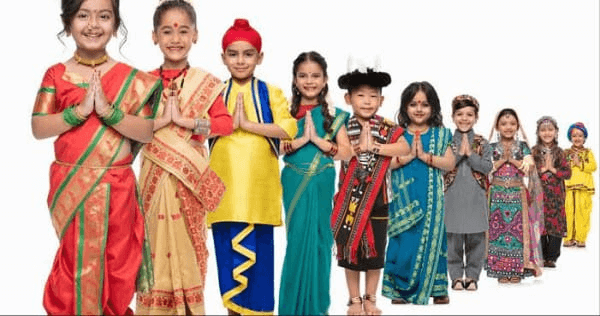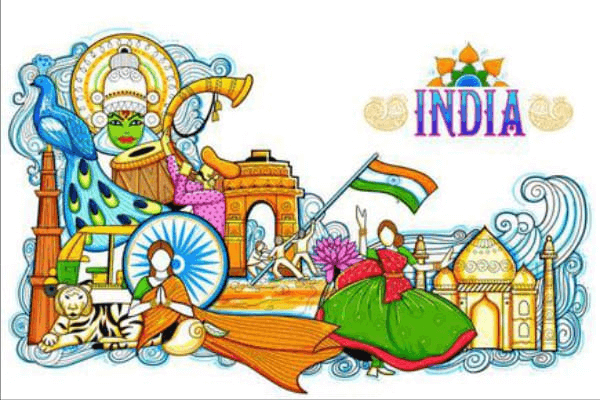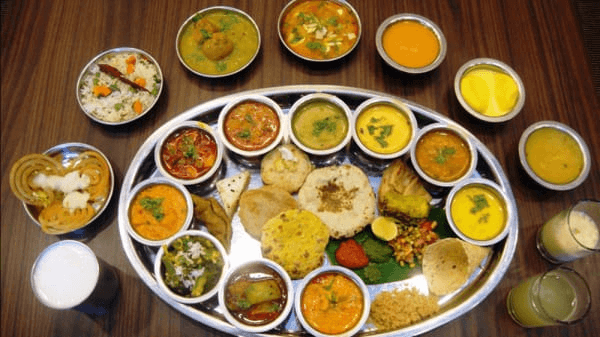Indian Culture EssayIndia has a vibrant culture, which has shaped who we are. We are now a vibrant, wealthy, and diversified country thanks to it, whether in terms of religion, art, intellectual achievements, or performing arts. The essay on Indian culture and tradition is a manual for the country's diverse cultures and customs. India was the target of numerous invasions, which only increased the existing variety. Given that it has assimilated numerous cultures and advanced, India is recognized as a strong and multicultural society today. Many different religions, traditions, and customs have been practised here. 
India is a huge cultural melting pot due to its diverse habits and beliefs. Even though people are becoming more contemporary, they continue to uphold moral principles and observe traditional holiday celebrations. Therefore, the epic lessons of the Ramayana and Mahabharata are still being lived today. Indians are superb cooks, but it might be difficult for visitors to adapt to the potent flavours because they employ their spices expressly for medicinal purposes. For a very long time, people have utilized spices like cumin, turmeric, and cardamom to improve the flavour and nutritional value of food. Indian Culture and TraditionAmong the 28 states, India has a strong cultural and traditional presence. The majority of religions were developed in the beautiful, holy country of India. Religions centred on dharma and karma that has Indian roots include Buddhism, Jainism, and Hinduism. The phrase "India is my nation, and I am proud of its rich and varied heritage" was also added to the vow. 
Indians are superb cooks, but it might be difficult for visitors to adapt to the potent flavours because they employ their spices expressly for medicinal purposes. For a very long time, people have utilised spices like cumin, turmeric, and cardamom to improve the flavour and nutritional value of food. It has commonly been observed that when athletes came to India, they either had a cook or cooking skills as they are not used to such spicy food. The meal is made complete with wheat, rice, and legumes. Because of their religious beliefs, the bulk of the population is vegetarian. Speaking of languages, India is fortunate to use a vast variety of them. Every state speaks its dialect. Most of the state's population can only speak its native tongue. The representative languages of the respective states are Gujrathi, Malayalam, Marathi, Tamil, Punjabi, and Telugu, among many more. Although there are 15 regional tongues, Hindi is the majority language in the nation. The majority of the fabled sacred scriptures are only found in Sanskrit, which is regarded as an ancient and revered language. In addition to these, the majority of people are fluent in many more languages. Various religions' roots can be traced back to practices used more than 5,000 years ago. Additionally, it is taken into account because Hinduism derives from the Vedas. As a result, Sanskrit has been used to write all of the holy Hindu writings. Jainism is thought to have also originated and existed in the Indus valley in antiquity. The other religion that developed in this nation through the teachings of Gautam Buddha is Buddhism. There have been many different eras, but none of them had much of an impact on how the actual culture felt. As a result, older generations continue to influence younger generations' cultures. Additionally, our ethnic culture instils respect for authority figures, good manners, compassion for the weak, and assistance to the underprivileged. Furthermore, it is part of our wonderful tradition to treat visitors to this country as gods. We have a well-known adage like "Atithi Devo Bhava" because of this. Therefore, spiritual rituals and humanism are the fundamental roots of our civilization. Most outsiders find Indian attire to be lovely. A woman wearing a saree is a symbol of national pride. Thanks to these pleasant effects, she looks so stunning that most international women aspire to be like her. Temple dancers first wore the saree in ancient times. They may still move freely and modestly, thanks to the saree. Men, on the other hand, typically dressed in a dhoti and kurta. Dhoti is a sort of fabric with no further embellishments. Most people wore it with dignity because the great Mahatma Gandhi loved it so much. Aside from the facts listed above, Indians are renowned for their artistic talent and academic prowess. Amitabh Bachchan, Dhirubhai Ambani, Sachin Tendulkar, and Shah-Rukh Khan, there are other Indians who are shining and representing their country worldwide, including Rajnikant and Sundar Pichai. Every year, 20 to 30 major festivals are observed, and each one has a rich history and shows respect for the associated religion. India is not falling behind in terms of business either. For 70% of individuals in India, agriculture is their preferred line of work. It is our duty to protect our vibrant culture. Indian culture is one of the oldest and most distinctive in the world. It has a variety of traditional beliefs, as well as customs related to dance, festivals, music, and clothing that differ from state to state or even town to town. India's influence on the entire world, where everyone admires and follows it, can be seen in its art, cuisine, religion, literature, education, heritage, and clothing, among other things. It is referred to as the "country of diversity in cultures." Due to the unique racial makeup of its population, India thrives on many languages, faiths, and civilizations. It is one of the countries in the world with the most varied civilizations. India conjures images of vivid colours, happy children running through the streets, bangle sellers, street cuisine, music, religious celebrations, etc. ReligionIndia is a country where many different religions are practised. It is the home of numerous religions, including Buddhism, Sikhism, Jainism, Islam, Hinduism, and Islam. The four Indian religions of Hinduism, Sikhism, Jainism, and Buddhism originated in India; however, there are also adherents of other religions that are not Indian. India's population maintains a strong conviction in religion because they consider it a way of life, which gives their lives meaning and purpose. Religions in this country encompass a wide range of practices in addition to only beliefs, such as morals, customs, rites, and way of life theories. FamiliesEvery Indian family places a high value on their family. Indians are renowned for living near their grandparents, uncles, aunts, and the following generation of progeny. The house has been handed down from family to family over many years. However, when children move to cities for jobs or school and settle there, nuclear families become more prevalent in the new modern age. Additionally, everyone today wishes to have their own private life free from outside intrusion. However, since everyone does get together frequently, the idea of family get-togethers and reunions is still alive and well. Indian FestivalsIndia is renowned throughout the world for its traditional festivities. Every month, there is a festival celebration because it is a secular nation with a wide range of religious practices. These celebrations may be religious, seasonal, or of significant national significance. Every holiday is observed differently based on its ritual because each one is important in its manner. People in India celebrate national holidays like Gandhi Jayanti, Independence Day, and Republic Day across the country. Religious festivals include Diwali, Dussehra, Eid ul-Fitr, Eid ul-Zuha, Christmas, Ganesh Chaturthi, etc. All of the seasonal celebrations, including Baisakhi, Onam, Pongal, and Bihu, are held to commemorate the harvest season during the two harvesting seasons of Rabi and Kharif. Festivals foster affection, ties, cross-cultural interactions, and joyful moments among people. Cuisine
Indian food is renowned for its many spicy meals, curries, rice dishes, desserts, etc. Due to regional variations, each cuisine features various dishes and cooking methods. The food differs according to every occasion and culture, and different cuisines are prepared in different regions of India utilizing different ingredients. While people from Islamic cultural backgrounds typically eat meat, kebabs, etc., Hindus consume vegetarian foods like pulao, veggies, daal, and rajma. People in the southern region of India frequently cook with coconut oil and eat rice dishes like dosa, idli, and Appam with coconut chutney, and sambhar. ClothingIndian clothing is regarded as the height of modesty, and each state and area has distinct styles. But the dhoti for men and the saree for ladies are the two items of apparel that best exemplify Indian culture. Women adorn themselves with several ankle-length Payals and bangles. Even the way people dressed differed throughout areas, civilizations, and faiths. Christian women chose gowns, whereas Muslim women preferred salwar kameez. Most men wore dhotis, lungis, salwar, and kurta. People's sense of style has evolved in modern society, and men and women now dress in more contemporary western fashions. Although they are currently in more modern and attractive patterns, Indian clothing still has worth. LanguageIn India, there is no particular language that is widely used. Still, Hindi is one that the majorities of Indians are familiar with and can speak or understand. There are various languages and dialects in each area. Hindi and English are listed as India's two official languages under the Official Language Act. Other areas or states speak Gujarati, Marathi, Bangla, Malayalam, Tamil, Telugu, Kannada, Kashmiri, Punjabi, and more languages.
Next TopicGood Manners Essay
|
 For Videos Join Our Youtube Channel: Join Now
For Videos Join Our Youtube Channel: Join Now
Feedback
- Send your Feedback to [email protected]
Help Others, Please Share









